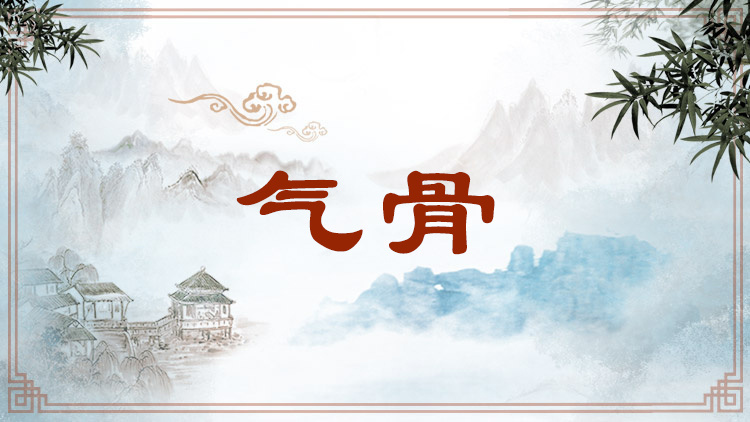气骨
Emotional Vitality and Forcefulness

指作品的气势与骨力。多形容文学艺术作品所呈现出的刚健劲拔的精神气度和力度美。“气骨”这一术语出现于南朝,与当时的人物品评风气相呼应,用来形容诗文、书法、绘画等文学艺术作品中劲健的精神气度和内在骨力,与“风骨”含义接近,而与“风姿”(作品外在的风貌姿态)相对。
This term refers to the emotional strength and the vitality of a literary work. It was first used during the Southern Dynasties, resonating with the social practice of making comment on people. The term was used to describe the emotional vigor and forcefulness of artistic works such as poetry, essays, calligraphy, and paintings. It is similar in meaning to fenggu (风骨), but contrary to fengzi (风姿), a term meaning external elegance of an artistic work.
引例 Citations:
◎言气骨则建安为俦,论宫商则太康不逮。(殷璠《河岳英灵集·集论》)
论气势与骨力,能与建安时期的作品相媲美;论音节与韵律,能超过太康时期的作品。
In terms of its emotional vitality and forcefulness, the poem stands equal to works of the Jian'an Reign period; in terms of its musicality and rhythms, it surpasses the works of the Taikang Reign period. (Yin Fan: A Collection of Poems by Distinguished Poets)
◎观鲁公此帖,奇伟秀拔,奄有魏晋隋唐以来风流气骨。(黄庭坚《题颜鲁公帖》)
观颜真卿这个法帖,奇特雄伟,秀美挺拔,全然具备魏晋隋唐以来的神韵气骨。
This piece of calligraphy by Lord Lu (Yan Zhenqing) is amazing, vigorous, mellow, and forceful, fully illustrating the admirable emotional vitality and strength that characterized the style since the Wei, Jin, Sui and Tang dynasties. (Huang Tingjian: Inscription on Lord Lu's Calligraphy)
推荐:教育部 国家语委
供稿:北京外国语大学 外语教学与研究出版社
责任编辑:钱耐安





